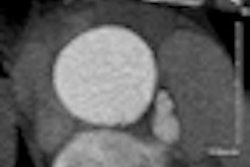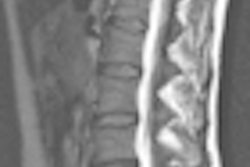
NEW YORK (Reuters Health) - Low-dose CT coronary angiography (CTCA) could be sparing more patients from invasive angiography, a new report from Switzerland suggests.
"We should stop sending patients with low pretest-probability into the cath lab for invasive coronary angiography to rule out coronary artery disease (CAD)," Dr. Philipp A. Kaufmann from University Hospital Zurich told Reuters Health in an e-mail. "We should rather consider using low-dose CT coronary angiography."
CTCA yields diagnostic images as long as the heart rate can be brought below 62 beats per minute, he and his colleagues report in the January 18 Journal of the American College of Cardiology.
And it does so noninvasively, and with less radiation than invasive angiography, Dr. Kaufman said.
Dr. Kaufmann and his co-authors analyzed the feasibility of low-dose 64-slice CTCA "in an everyday population" of 566 outpatients with suspected CAD or clinical deterioration of known CAD.
All patients received sublingual isosorbide dinitrate a few minutes before the procedure; 394 needed intravenous metoprolol to lower the heart rate during image acquisition.
The mean effective radiation dose exposure was 1.8 mSv, which compares favorably with the 12 mSv recently reported in a real-world survey of spiral CTCA and is well below the 6.3 mSv reported for invasive coronary angiography.
In more than 95% of evaluated segments (7,516 of 7,814), the images were of diagnostic quality. In 504 patients (89.0%), this was the case for each individual segment.
Sixty-two patients had at least one segment without a diagnostic image, but a third of those patients had at least one other obstructive lesion in another segment that was clearly imaged.
Nondiagnostic segments were significantly less common when the patient's heart rate remained below 62 bpm (1.2%) versus at or above 62 bpm (8.4%; p < 0.001).
"We do not promote screening the whole population," Dr. Kaufmann told Reuters Health. But for patients in whom CAD needs to be ruled out, "this technique should be considered as first choice."
"We are planning a study in which we evaluate the prognostic value of the technique," Dr. Kaufmann added. "This requires some years of follow-up."
By Will Boggs, MD
Source: http://bit.ly/dFN5ER
J Am Coll Cardiol 2011;57:332-336.
Last Updated: 2011-01-11 17:13:05 -0400 (Reuters Health)
Related Reading
Big CTA trial shows coronary plaque risk in low-risk patients, January 7, 2011
Turf battles may be impeding growth of CCTA compared to MPI, December 28, 2010
CAD boosts new readers in diagnosing stenosis on CCTA, November 28, 2010
CONFIRM registry fills in CCTA evidence gaps, November 15, 2010
Supersized CONFIRM trial tackles coronary CTA and mortality, July 30, 2010
Copyright © 2011 Reuters Limited. All rights reserved. Republication or redistribution of Reuters content, including by framing or similar means, is expressly prohibited without the prior written consent of Reuters. Reuters shall not be liable for any errors or delays in the content, or for any actions taken in reliance thereon. Reuters and the Reuters sphere logo are registered trademarks and trademarks of the Reuters group of companies around the world.



















